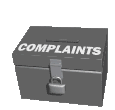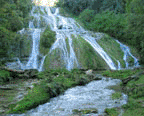Report any errors, problems, and inaccuracies, by clicking on the complaints box!
Wood charcoal has always been the primary fuel for cooking in Haiti because it's cheaper, burns cleanly and easy to find. As the price of kerosene and propane gas tank is higher 90% of homes depend traditionally on charcoal while others exploit wood, thus leaving the country with a little less than 3% of its forest. Given that issue, which has left Haiti lacking of wood supplies, some engineers were able to create a charcoal that could be produced easily, cost-effective and plentiful in Haiti.
With the devotion of Amy Smith an instructor at MIT in Cambridge, MA, and Gerthy Lahens, a leading activist in Boston's Haitian community whose daughter was a student in D-Lab, working together on alternative cooking fuels for undeveloped countries, these engineers ultimately settled on sugarcane waste that works well when converted into charcoal briquettes because it provides much needed source of cheap fuel that is cleaner burning,
Charcoal Briquettes!
ALTERNATIVE FUELS FOR COOKING
Process rundown of sugarcane waste converted into charcoal briquettes
Field of sugarcane whose stems are used in the production of alcohol, rum and molasses
economic, produced locally for about one-third of the cost meaning that people won't have to cut down trees. In addition, the sugarcane waste has no real nutritional value and it's not used for anything else.
These briquettes are expected to displace the use of about 30 times their weight in wood. Related researches suggest that many other types of agricultural waste, such as peanut hulls, coconut shells, vetiver grass, and saw dust can be converted into charcoal briquettes by employing similar techniques. This could mean saving about 15,000 hectares of precious forest a year alone, and creating personal income for sugarcane farmers who can sell them in a local marketplace.
With the staggering amount of sugarcane trash that is left after the cane is harvested and pressed to extract the juice within the plant, the waste known as bagasse is either burned in the fields or used to partially fuel the sugarcane refineries process. But, for indoor cooking raw bagasse burned would be clearly unsuitable for such smokes posing potentially major health risks. Moreover, the burning of so much tones of sugarcane trash in the fields each year produces a huge amount of smoke and atmospheric pollution.
So, before bagasse could be used as an indoor cooking fuel, it must undergo a process by which the raw fibrous waste, well dried, can be converted into charcoal briquettes. The process is very simple and requires an oil drum kiln to be constructed in order to burn the bagasse on high temperature in a low-oxygen environment. After the burning process, the carbonized bagasse obtained can be sprinkled with water to reduce the amount of airbone carbone dust, then pulverized in a subsequent stage in a cassava porridge known as konkote (a suitable charcoal binder that holds together the charcoal fines).
Briquetting is accomplished with the aid of various binding agents: rice glume, molasses, or excellent starch obtained from the roots of cassava. It requires also a press to form the mixture into a cake or briquette which is then passed through a drying oven to cure or set it by drying out the water, so that the briquette is strong enough to be used in the same burning apparatus as normal lump charcoal.


The briquettes can be hand-formed or produced in simple molds making small pillow-shaped charcoals until they are fully dried and hardened through the drying oven or naturally air dry. The longer briquettes are allowed to air dry, the less the ignition time, they produce little to no smoke while burning, and quickly bring water to boil.


Sugarcane charcoal briquettes can be profitable in the local marketplace and rural stretches of Haiti if these technologies are conveniently developed. Better yet, sugarcane waste can also be used to produce paper, pasteboard, cardboard walls or be a substitue or partial-substitute for cereal grains in pig diets. Many other alternatives have also unquestionable advantages because they are locally produced.
Overall, sugarcane and all the plants which provide important alternative resources could be used to reforest denuded lands in the Northeast of Haiti, the Southeast, the Plateau Central, the Savane Désolée and so on, and help ease dependence on costly oil imports. As such, many devoted entrepreneurs along with farmers would turn into bio-energy to make a living, subsequently slowing the advance of
deforestation throughout the country.
Sugarcane waste transformed into charcoal briquettes
Lump charcoal bags sold in the marketplace and used as the primary fuel for cooking in Haiti
Field of vetiver outside of Milot,
a fragrant grass used in perfume production,
and
another potential charcoal source
Local trailer loaded with pile of sugarcane ready to be pressed for extraction of juice
Sugarcane trash on a field outside of Milot, Cap-Haitien
Cablevision Channel 18 Long Island on Friday at 8:00 PM, Saturday and Sunday at 3:00 PM
Comcast Cable Channel 27 New Jersey on Friday at 7:00 PM - Sat. at 2:00PM - Sun. at 5:00 PM
Comcast Cable Channel 64 Jersey City on Saturday at 4:00 PM,
UHF Channel 26 Brooklyn, Queens, Manhattan, Bronx, Long Island on Saturday at 8:00 PM
WITH BARBARA & VALERIO SAINT-LOUIS
© 2004 - 2005 • Haitian Treasures • All rights reserved.











